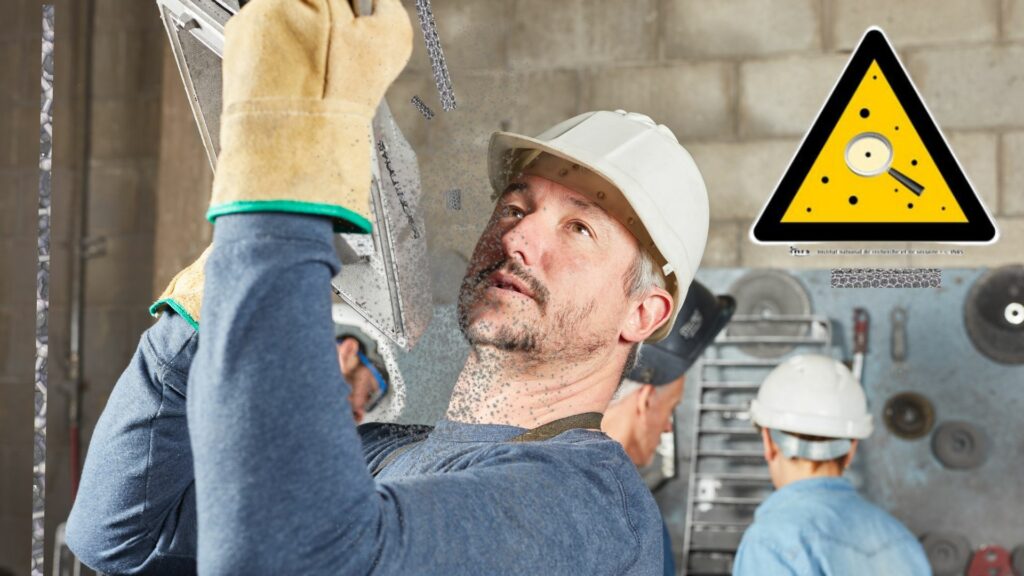
Carbon nanotubes: beware, short ones can also be toxic
The French National Institute for Research and Safety (INRS) warns of the toxicity of multiwall carbon nanotubes, not only for the long, thick ones already identified as dangerous, but also for the short, thin ones. Immediate measures must be taken to ensure the safety of exposed workers… whose numbers remain unknown to the authorities for the time being!
Multiwall carbon nanotubes spearhead the nano-revolution
Long heralded as revolutionary materials, multiwall carbon nanotubes (MWCNTs) soon attracted keen interest from manufacturers in fields such as electronics and aerospace, thanks to their extraordinary properties of electrical and thermal conductivity, mechanical strength, and light weight. Although their promise has been slow to materialize, the use of MWCNTs is growing, particularly in sectors linked to decarbonization, such as the manufacture of lithium-ion batteries for electric vehicles or wind turbine blades.
Long, thick CNTs were already identified as potentially carcinogenic
However, because of their often long and fibrous form, reminiscent of asbestos, long carbon nanotubes very early on raised serious concerns about their toxicity. They can penetrate easily and persist for a long time in the deep respiratory tract, from which our immune system struggles to dislodge them, leading to inflammation of the lungs and pleura. That’s why, in 2017, the International Agency for Research on Cancer (Circ) classified one of these nanotubes, Mitsui-7, as a “possible human carcinogen” (2B), and the European Chemicals Agency (ECHA) classified it as a “possible human carcinogen” (2B). validated in 2022 the principle of classifying long multiwall carbon nanotubes as carcinogenic by inhalation (cat. 1B). INRS has initiated additional studies to fill the data gaps on the various forms of CNT.
INRS has compared the hazards of short, thin nanotubes with those of long, thick ones.
This runs counter to the long-held assumption that only long, thick CNTs pose a problem, an in-depth study by INRS reveals that Short, thin CNT also induce acute pulmonary inflammation, as do long, thick CNT. For Short and thin NTCswas also observed, in addition, a chronic inflammation and hyperplasia (abnormal proliferation) in the lungs.
This study, based on in vivo and in vitro experiments, was the subject of a doctoral thesis1Cf. Hélène Barthel, Influence of physical parameters of multiwall carbon nanotubes on their toxicological properties in a bronchial epithelial cell model: reconciliation with pulmonary effects in rats, PhD Thesis, 2022 and two scientific articles2See Barthel et al, Needlelike, short and thin multi-walled carbon nanotubes: comparison of effects on wild type and p53+/- rat lungs, Nanotoxicology, 2023 and Barthel et al, Continuous Long-Term Exposure to Low Concentrations of MWCNTs Induces an Epithelial-Mesenchymal Transition in BEAS-2B Cells, Nanomaterials, 11(7), 2021.
INRS calls for better protection for workers exposed to CNT of all sizes
In view of these new data and the shortcomings of current regulatory approaches, INRS concludes that “it’s necessary to handle short, thin nanotubes as carefully as long, thick ones, and that the company’s chemical risk prevention approach should be based on the general principles of prevention“3In french : “Il est nécessaire de manipuler les nanotubes courts et fins avec autant de précaution que les longs et épais (…) et il convient de mettre en œuvre la démarche de prévention des risques chimiques en entreprise en s’appuyant sur les principes généraux de prévention“, cf https://www.inrs.fr/actualites/nanotubes-carbone.html.
By the way… how many workers are exposed to CNT? It’s hard to tell!
According to data reported in the r-nano register, “between one and ten tonnes” of carbon nanotubes are imported and handled each year in France.4See: Annual reports on declarations of substances imported, manufactured, or distributed in France, Ministry of Ecological Transition.Unfortunately, the official reports only provide a range, without giving a more precise tonnage, as only ANSES has this information, or perhaps one of the few organizations that can request access to the register data: ANSM, Santé publique France, INRS, INERIS, organizations in charge of toxicovigilance, regional waste observatories and the Haut Conseil de la Santé publique (French High Council for Public Health); for their part, researchers from INSERM, CNRS, CEA, INRAé, CARSAT, occupational physicians and preventionists, etc., are not entitled to access the data. consumer and environmental protection associations, and the general public even less so!. Thanks to r-nano, ANSES should be able to find out how many companies are involved, but as with precise tonnages, this type of information does not appear in public reports, due to the data confidentiality protection demanded by industry federations.
As for the number of exposed workers in France, the information simply doesn’t exist. At the very least, no public authority seems to have a quantified estimate – not ANSES, INRS, the Ministry of Labour or Santé publique France. When questioned by AVICENN, the two latter institutions did not answer our questions on this point – nor, for that matter, on the progress of the EpiNano program, which is supposed to monitor the health of workers exposed to carbon nanotubes and other nanomaterials since 2014. Is the program still in place? This is doubtful, which would not bode well in view of this latest INRS publication…
Questioned by AVICENN, Charles Parmentier, confederal secretary in charge of Work Transformations of the CFDT, recalls that “the CFDT campaigns to protect the health of workers exposed to nanos and requests in particular the strengthening of transparency and the sharing of information on their use in industrial processes, traceability of occupational exposures and application of the No Data / No Market principle”.
More generally, while many nanomaterials remain on the market without having been previously assessed, INRS’ results remind us of the importance of implementing the precautionary principle to also protect the general population and the environment.

Other news on the topic
Upcoming Nano Agenda

- E-learning program: awareness-raising for personnel who come into contact with nanomaterials during research, formulation, production, maintenance, cleaning, upkeep, etc., as well as safety coordinators or engineers, facility managers, heads of laboratories where nanoparticles are handled.
- Organizers: INSTN Grenoble (CEA)
- On the program:
- 1 – Introduction, definition and characteristics of nanomaterials
- 2 – Toxicity of nanomaterials: the state of knowledge
- 3 – Metrology and characterization of nanomaterials
- 4 – Prevention and protection against nanomaterials in the workplace
- 5 – Quiz: assessment of learning outcomes
- The 2-hour course can be viewed for one month from the date of registration.
- Website: https://instn.cea.fr/…risques-lies-aux-nanomateriaux…

- Scientific congress
- Object: Addressing critical research topics in nanomaterials, offering a dedicated space for knowledge exchange, networking, and collaboration on global nanotechnology innovations
- Website: https://scientificwisdom.org/conferences/nanomaterials.html
- Learn more about :
- sectors developing or using functionalized nanomaterials
- recent innovations in surface chemistry characterization
- experts, industrialists and manufacturers of measuring instruments
- screening methods (TGA, ICP, XRF, Raman, NMR) and extreme surface analysis (XPS, SIMS)
- current and future actions at European and international level
- Organizers: LNE, Association NanoMesureFrance and the European SMURFnano project
- Website: www.lne.fr/fr/evenements/technical-day-nanomaterials-surface-chemistry
Notes and references
- 1
- 2See Barthel et al, Needlelike, short and thin multi-walled carbon nanotubes: comparison of effects on wild type and p53+/- rat lungs, Nanotoxicology, 2023 and Barthel et al, Continuous Long-Term Exposure to Low Concentrations of MWCNTs Induces an Epithelial-Mesenchymal Transition in BEAS-2B Cells, Nanomaterials, 11(7), 2021
- 3In french : “Il est nécessaire de manipuler les nanotubes courts et fins avec autant de précaution que les longs et épais (…) et il convient de mettre en œuvre la démarche de prévention des risques chimiques en entreprise en s’appuyant sur les principes généraux de prévention“, cf https://www.inrs.fr/actualites/nanotubes-carbone.html
- 4See: Annual reports on declarations of substances imported, manufactured, or distributed in France, Ministry of Ecological Transition.Unfortunately, the official reports only provide a range, without giving a more precise tonnage, as only ANSES has this information, or perhaps one of the few organizations that can request access to the register data: ANSM, Santé publique France, INRS, INERIS, organizations in charge of toxicovigilance, regional waste observatories and the Haut Conseil de la Santé publique (French High Council for Public Health); for their part, researchers from INSERM, CNRS, CEA, INRAé, CARSAT, occupational physicians and preventionists, etc., are not entitled to access the data. consumer and environmental protection associations, and the general public even less so!



